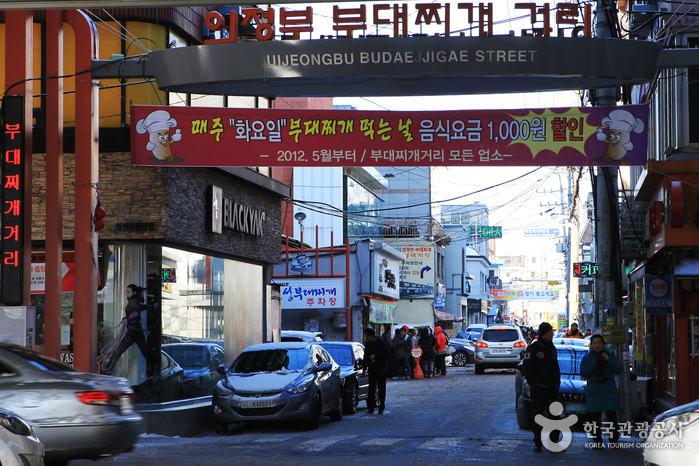Didier Dubot - Hyundai Department Store Trade Center Branch [Tax Refund Shop] (디디에두보현대무역점)
13.3Km 2024-04-19
2F, 517, Teheran-ro, Gangnam-gu, Seoul
-
Bice - Hyundai Department Store Trade Center Branch [Tax Refund Shop] (비체현대무역점)
13.3Km 2024-04-23
2F, 517, Teheran-ro, Gangnam-gu, Seoul
-
J.Estina - Hyundai Department Store Trade Center Branch [Tax Refund Shop] (제이에스티나현대무역점)
13.3Km 2024-04-19
2F, 517, Teheran-ro, Gangnam-gu, Seoul
-
Stonehenge - Hyundai Department Store Trade Center Branch [Tax Refund Shop] (스톤헨지현대무역점)
13.3Km 2024-04-19
2F, 517, Teheran-ro, Gangnam-gu, Seoul
-
Swarovski - Hyundai Trade Center Branch [Tax Refund Shop] (스와로브스키 현대무역점)
13.3Km 2024-04-16
2F, 517, Teheran-ro, Gangnam-gu, Seoul
-
Loewe - Hyundai Department Store Trade Center Branch [Tax Refund Shop] (로에베현대무역점)
13.3Km 2024-04-19
2F, 517, Teheran-ro, Gangnam-gu, Seoul
-
Golden Goose - Hyundai Department Store Trade Center Branch [Tax Refund Shop] (골든구스현대무역점)
13.3Km 2024-04-23
2F, 517, Teheran-ro, Gangnam-gu, Seoul
-
World Cup Park (월드컵공원)
13.3Km 2024-10-23
243-60 World Cup-ro, Mapo-gu, Seoul
Opened on May 1st, 2002, the Wolrd Cup Park was once a 15-year-old landfill that held over 92 million tons of garbage. The park is located near Seoul World Cup Stadium, and is made up of five smaller parks - Pyeonghwa (Peace) Park, Haneul (Sky) Park, Noeul (Sunset) Park, Nanjicheon Park, and Nanji Hangang Park.
* Pyeonghwa Park: Closest to Seoul World Cup Stadium, it holds a pond, garden, children’s playground, and forest. As a representative park of World Cup Park, the park was designed in hopes of peace and harmony between mankind and nature. It is often used as a picnic area and place for nature studies.
* Nanji Hangang Park: Nanji Hangang Park was developed on the banks of the Hangang River. In contrast to other Hangang River parks, Nanji Hangang Park is a water-friendly park that has a gradual slope towards the riverbank. The park consists of a camping ground, soccer field, basketball court, grass field, cruise ship port, and an area for nature studies.
* Haneul Park: Haneul Park consists of vast grassland located at the highest elevation of the five parks. The park's pasture is covered with eulalias and wild flowers in their most natural state. In addition, 30,000 butterflies of different species were introduced in 2000 to stabilize the ecosystem. Five wind-powered generators provide power to the park and the park’s maintenance office. Once a mountain of garbage, it is now a green hill with 22 lookout points offering breathtaking views of Seoul, including the N Seoul Tower, Bukhansan Mountain, and Hangang River. Tall trees are line the park to provide shades and serve as resting spots for visitors. As a popular spot to enjoy the sight of eulalias, the park usually remains open until late in the evening during the Eulalia Festival period.
* Noeul Park: In order to prevent the vast area of land of what was once a wasteland from becoming an unnecessary chunk of land, a nine-hole golf course was constructed in what is now known as Noeul Park. The golf course serves as an environment friendly entertainment park to visitors while stabilizing the geographical formation and has an urban park nearby that offers scenic views of the Hangang River and beautiful sunset. Located west of the golf park is Noeul Square, decorated with shrubs and flowers.
* Nanjicheon Park: Nanjicheon Park was developed from the Nanji Stream, which flowed under Haneul Park. It was once overflowing with sewage runoff from a nearby landfill, but it has since been beautifully restored into a park with clear water. The park is built to serve as a recreational spot for those with for youths, elders, and people with disabilities.
Isshou (잇쇼우)
13.3Km 2024-02-15
109 Daelim Acrotel, 524 Seolleung-ro, Gangnam-gu, Seoul
Isshou is a Japanese restaurant specializing in sanuki udon, strategically situated around Seolleung and Jeongneung Royal Tomb, the UNESCO World Heritage. The standout offering is the Isshou jeongsik (pork cutlet with rice and udon set menu), featuring handcrafted udon, deep-fried pumpkin, and a stir-fried beef with rice. The restaurant includes a section where fresh noodles are made, allowing customers to purchase them on the spot. Conveniently located, nearby attractions encompass COEX, Bongeunsa Temple, and the Seoul Arts Center.
Uijeongbu Budaejjigae Street (의정부 부대찌개거리)
13.3Km 2023-10-27
7, Hoguk-ro 1309beon-gil, Uijeongbu-si, Gyeonggi-do
The word “budaejjigae” has two parts: “budae”, or military unit, and “jjigae,” a dish made by boiling ingredients and stock in a pot. It originates from the post-Korean War period, where processed meat from US Army bases was made into a jjigae with vegetables, glass noodles, ramyeon, and the like. While the exact origin of the dish is difficult to establish, a strong tradition of sausage jjigae was established in Uijeongbu, thanks to its proximity to US Army bases. These geographical characteristics created today’s Uijeongbu Budaejjigae Street. Starting with Odeng Sikdang, the origin of the street, restaurants specializing in sausage jjigae entered the area, creating a specialized street and a landmark of Uijeongbu.


 English
English
 한국어
한국어 日本語
日本語 中文(简体)
中文(简体) Deutsch
Deutsch Français
Français Español
Español Русский
Русский